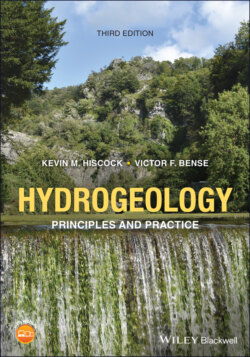Читать книгу Hydrogeology - Kevin M. Hiscock - Страница 44
1.8 Groundwater resources in developing countries
ОглавлениеIt remains one of the greatest challenges for the future to provide the basic amenity of a safe and reliable supply of drinking water to the entire world’s population. Despite the efforts of governments, charities and aid agencies, many villagers have to walk hundreds of metres to obtain drinking water from sources that may be unprotected from contamination (Fig. 1.15). Pollution sources include unsewered pit latrines to dispose of human wastes, inorganic fertilizers and pesticides used in an effort to secure self‐sufficiency in food production and industrial wastes in urban areas.
In the developing world, groundwater is extensively used for drinking water supplies, especially in smaller towns and rural areas, where it is often the cheapest source. Groundwater schemes consist typically of large numbers of boreholes, often drilled on an uncontrolled basis, providing untreated, unmonitored and often unconnected supplies. Shallower dug wells continue to be constructed in some cases. Better yielding boreholes (100 L s−1) are quite widely developed in larger towns to provide piped supplies. Even in these cases, raw water monitoring and treatment are often limited and intermittent.
The Third World Water Forum held in Osaka, Japan, in March 2003 emphasized issues relating to the development and management of groundwater and recommended that many developing nations need to appreciate their social and economic dependency on groundwater and to invest in strengthening institutional provisions and building institutional capacity for its improved management. International development agencies and banks were urged to give higher priority to supporting realistic initiatives to strengthen governance of groundwater resources and local aquifer management. Future sustainable livelihoods, food security and key ecological systems in developing nations will be dependent on such initiatives.
Fig. 1.15 Collection of water for domestic use from a hand‐pumped tube well drilled in Precambrian metamorphic rock in the Uda Walawe Basin, Sri Lanka.
As examples of the significance of groundwater in leading the economic development of rural and expanding urban areas in developing countries, Box 1.6 provides a description of the groundwater potential of the African continent and Box 1.7 describes groundwater resources in the Indo‐Gangetic Basin in South Asia.
